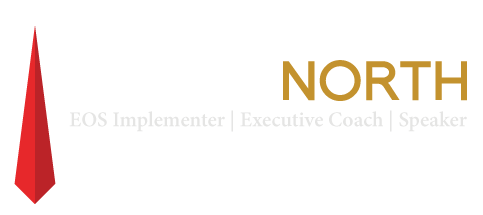What is mindfulness? Mindfulness has become a buzzword and a trend both in and out of business. However, most people don’t really understand what mindfulness is.
Many people confuse the techniques of attaining mindfulness with what mindfulness actually is. Slow, deep breathing isn’t mindfulness. Yoga isn’t mindfulness. Meditation isn’t mindfulness. However, all of these are mindfulness techniques, and many others can help you attain a mindful state.
Three levels of mindfulness
There are three levels of mindfulness: Level 1 is mindfulness with yourself, Level 2 is mindfulness with others, and Level 3 is mindfulness for the planet. The definition of leaders being mindful with themselves is choosing to be present in the moment, with curiosity and without judgment.
Leaders’ belief that mindfulness is important
In audience research — in which audience members could answer questions with a remote to provide anonymous, honest data — I asked C-level executives in the nutraceutical industry, “How important is mindfulness in leadership?” The results:
- 90% answered mindfulness is either critical or somewhat critical.
- 8% weren’t sure.
- 2% indicated it’s not at all important.
Mindfulness takes place in the executive brain (the prefrontal cortex); it’s the most advanced part of your brain. When being mindful, your mind is off automatic response, which means you don’t have to think or react the way you normally would. You have time and space between what happens outside of yourself and your reaction to create choices. Reflecting back to our definition of mindfulness, it’s in this space that you’re curious and without judgment.
Slowing down your exhalations can help you be more mindful, because doing so stimulates the parasympathetic nervous system, which slows all of your physiology and creates a relaxing effect. When you relax, your executive brain — which is needed for mindfulness — is more available and active.
Some benefits of mindfulness:
- Increase in happiness
- Greater emotional control
- Boost in problem-solving ability
- Enhanced creativity
- Increase in focus
- Boost in inner peace
- Decrease in stress
To gain control of your stress, manage your breathing by making your exhalations roughly twice as long as your inhalations. This triggers your parasympathetic nervous system, which slows your body’s physiology and allows you to relax and use your executive brain to be more mindful.
Join speaker agent Kim Tracy and me in learning what mindfulness truly is and how it’s making a difference, either by watching the video of the interview that Kim originally produced or by reading the transcribed text below, which was edited to enhance readability
[vc_video link=”https://youtu.be/0LltkiSoG_8″]
Kim: Hi, I’m Kim Tracy with the Maxwell James Speaker Agency. So excited to be here with Dr. TC North who’s going to speak to us about mindful power. Now, in your high performance work what is being requested most often these days?
TC: Yeah, fun trend going on Kim. There’s the mindfulness trend all through this country and I think all through the world right now. It’s in corporate America and outside corporate America too. The trend I’m seeing in my high performance work is dealing a lot with fear and developing magnetic presence. Then my personal work I’ve always done a lot of work with mindfulness training in the past 35, 37 years. So now it’s really fun because I get to combine those two elements. People are asking for that and it seems like it’s a really fun trend.
What I’m running into though is fascinating in that we have this buzzword “mindfulness” and everybody has their own definition, their own interpretation of it. However, most people really don’t understand it at all.
Let me start with some statistics if I may. You know I have some background in science and so and this was a fun piece during a presentation I gave. The audience members all had remotes and I could ask the question, “How important is mindfulness in leadership?”.
This was a group of 395 chief level officers and the response was that 90% of them felt mindfulness was either critical or somewhat critical to leadership these days. Only 2% said it wasn’t and then about 7 or 8% said they didn’t have a clue. I think it’s really that number, that 7 or 8% probably should have been a lot bigger. I don’t think people really understand mindfulness because here’s what I’m reading and seeing (and this includes the Harvard Business review and all kinds of places) that people just talk about mindfulness as taking a deep breath.
A deep breath is not mindfulness. Doing Pilates is not mindfulness. Doing yoga is not mindfulness. Sitting in meditation for 45 minutes is not mindfulness. Any of these can actually take you into a mindful place, but people are mistaking the technique to become mindful with what mindfulness actually is.
What mindfulness is in the mind, in the brain, Kim, it is a stimulus response process. Our brains are programmed to work on stimulus response. We have all these memories stored. We have neural networks with all these memories stored so that when we experience something our minds are already set up to respond. That’s auto-response and it works very well for tying our shoes and doing most things that we really don’t want to spend a lot of brain power on.
But what we DO want to spend brain power on as leaders and managers and leaders of families (whether it’s businesses or families or whatever it is) is having the choice of HOW to respond.
That’s what mindfulness really does. It literally creates a gap in between stimulus and response so that you have that choice. The more you train this part of your brain – the prefrontal cortex – to slow down the greater the opportunity to create space between what happens outside of you and how you react to it. This is why breathing is very helpful. Long, slow exhalations actually slow your physiology by stimulating the parasympathetic nervous system. So when you slow your body down it tends to slow your mind down which tends to slow all your thoughts down including the most advanced part of your brain. That’s what mindfulness training really is.
Kim: That is fantastic. So as you’re going through this and you’re seeing the trend and you’re training people what it actually is, what benefits are you seeing them have?
TC: Oh, there is so much research in this and thank you for that question. The research (and this will be off the top of my head) includes things like when you stimulate the parasympathetic nervous system you decrease your stress, you decrease your stress response.
A great piece of research took place with ICU nurses in only six or eight weeks (it was a pretty short study). Basic mindfulness breathing techniques and meditation techniques were taught to these nurses and they actually decreased their stress response 40%.
I thought that was a huge change! These are people dealing with life and death. This is real, live stress. It’s not our made up stress in our minds (which we often do) things that aren’t really scary. This is really scary stuff because people can die. This was a great piece of research and it shows how impactful and how quickly you can actually work with your own brain when you do it with intention and good techniques.
Kim: Now, you work with a lot of C level executives. You also work with high level sales people. How do you see being mindful impacting them?
TC: Yeah, thank you. Other benefits, include increased creativity (which I think is huge). Let me dig out a couple of more, I actually listed a bunch for you. You increase your emotional control, you increase your problem solving ability, you increase your ability to focus, you enhance your inner peace. So the benefits of mindfulness – and that’s just a few of them are, – well researched, well documented, science is now behind this. Now we understand what’s going on in the brain and it’s not just foo-foo stuff, it’s not just stuff out of religion or spirituality, it’s actually very practical stuff that we can bring into our lives.
Kim: Now, I know that you love to leave audiences with a tidbit, a nugget – what is the nugget that you would like to share with people today?
TC: The most simple nugget of all is actually really profound. And this is something I may have mentioned in other YouTube videos we’ve done. When you do control your breathing, when you make your exhalations about twice as long as your inhalations, you slow your whole physiology down.
The key is that you really slow your exhalations. So many people take a deep breath and they go like this [breathes very quickly and deeply]. That doesn’t help me. That just gets me excited. That actually stimulates the part of my nervous system which excites me.
To stimulate the parasympathetic system is to slow your exhalation, which means you take a long or deep inhalation but it’s a slow exhalation, about twice as long. And when you do that you slow your whole physiology. When you slow your body physiology you slow your mind physiology which slows your thoughts and that gives you more opportunity to create space between what happens outside of you and how you react.
Kim: Excellent. If you would like to bring Dr. TC North in for one of his amazing keynotes, or workshops please contact me, Kim Tracy through MaxwellJames.net. Thank you so much!
TC: You’re welcome!
Be more mindful and be personally powerful. Have Mindful Power™!
My speaker agent Kim Tracy at the Maxwell James Agency produced this video. Please contact her here if you’re interested in having me deliver a keynote, workshop or webinar on mastering fear. Or contact me here if you would like to discuss personal work with me to build your confidence and presence.


